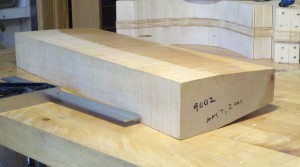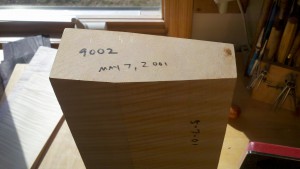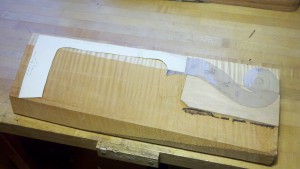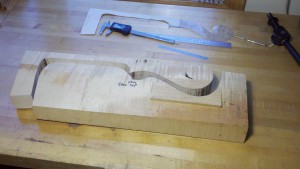As a young maker, my penchant for picking up another task before completely finishing the current one would trouble me. “This is silly. A serious artist should finish each task in order.”
This tiresome and pestilential belief was finally banished from my studio after learning that Titian would lay paintings aside for months if he felt like it. Taking the time to deliberate, to reconsider, to take a break and get refreshed is what makes the difference between art and commerce.

This, I tell myself, is why it is perfectly appropriate for me to pick up that lovely slab of maple that will become the neck and scroll of my cello.
At 20 x 6.5 x 2.5 inches and nearly 7 pounds, it is almost a menacing presence in the shop, and requires careful handling. Delicate instrument parts could easily be crushed, and the razor sharp edges of scroll blocks have given me more than one cut.

Generally I prepare sets of wood for instruments ahead of time. Cleaning off the rough exterior reveals the beauty of the flame and lets me fine-tune the alignment of the grain for tone as well as stability.
Dating each piece is useful and sometimes surprising how long it has been and how much the world has changed. No Google either.

The next step is to trace the template onto the scroll block. Stradivari used templates of heavy paper, so that is good enough for me.
See-through Mylar at the head allows me to choose the grain that will look best on the pegbox and scroll.
Most of the block is not used on this cello but will yield a violin and perhaps a viola scroll.

After cleaning up the saw marks, the widths of the head and neck are marked and the final shape begins to emerge. But that will be an entry for another day.